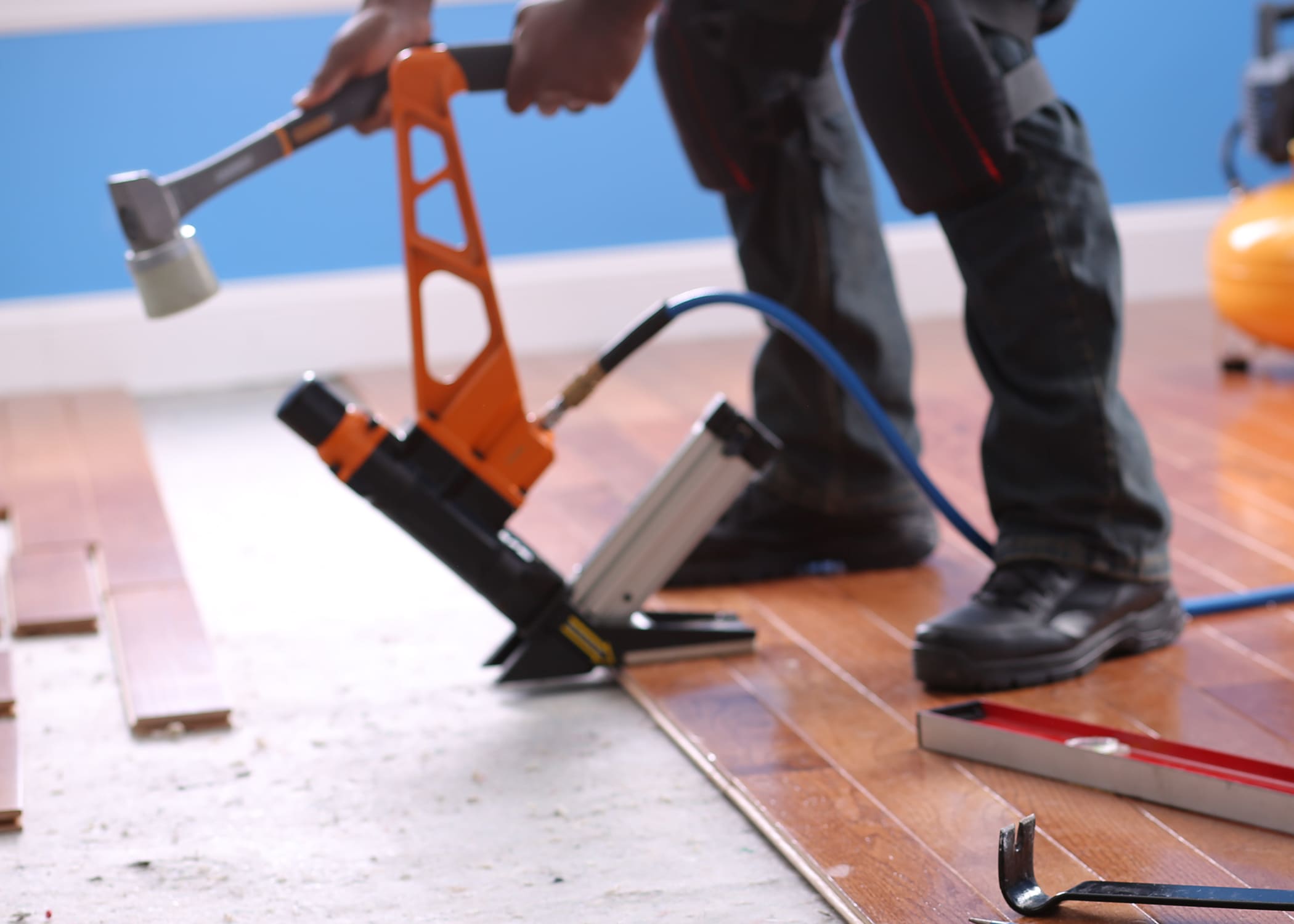- Home
- Education
- Flooring Basics
- Best Sub-Floors for Hardwood Installations
Best Sub-Floors for Hardwood Installations
Customer Question: What type of subfloor is better for hardwood flooring?
LL Flooring Install Team:
Georgia Pacific a well known manufacturer of plywood and OSB Oriented strand board panels has issued application recommendations for each.
GP takes into consideration such factors as reaction to moisture, seam peaking, board strength, screw and nail pull. They have determined that OSB panels can be warranted on specified applications such as, wall framing support and some roofing applications, but may tend to show rafter sag patterns through the shingles. Also, OSB is used extensively in new construction as subflooring for carpeting, hardwood and some resilient floorings.
Manufacturers of ridged flooring covering materials such as Stone and Ceramic Tiles do not express warranties when installing over OSB panels even when using a cement backer board because of future floor sag or movement.
In addition, Exotic hardwood flooring or "Iron woods" do best over a stronger, stiffer, sturdier plywood base for a secure nail hold.
So can hardwood be installed over OSB, Oriented Strand Board?
Yes, if using OSB select panels rated PS2 min 3/4" thick, recommended for most hardwood flooring.
Will it be warranted?
Warranties over any subflooring will issue from the Builder or panel Manufacturer in accordance with their recommendations. Lumber Liquidators warrants product finishes and milling.
For installations over Particle board, use Laminates, floating floors or if the Particle board is in good condition you can also staple down 3/8" engineered
For a nailing down 3/4" solids over Particle board:
1) Add an additional layer of felt and 3/8" plywood over the particle board, or
2) If you have height issues Pull up the particle board and replacing it with 5/8" or thicker plywood
Here are more Subfloor recommendations:
All structural panels/underlayment must be installed sealed-side down, and provide ¾" perimeter spacing. Square-edged or non tongue and grooved panels used as a subfloor will require a minimum 1/8˝ (3 mm) expansion space between all plywood seams.
Panels must meet minimum CDX grade Exposure 1 and US Voluntary Product Standard PS1-95, PS2-04 or Canadian performance standard CAN/CSA 0325-0-92 for construction sheathing. Check underside of panel for codes. Minimum of 3/8˝panel thickness when used as an underlayment. Joist spacing determines minimum subfloor thickness.
● Joist spacing 16" on center
Plywood: Minimum of (5/8˝) Oriented Strand Board (OSB): Minimum (3/4˝, 23/32") AdvanTech Minimum (3/4˝, 23/32")
● Joist spacing 16" up to 19.2" on center
Plywood: Minimum of (3/4˝, 23/32") Oriented Strand Board (OSB): Minimum of (3/4˝, 23/32")
● Joist spacing over 19.2"up to maximum 24" on center
Plywood: Minimum of (7/8") Oriented Strand Board (OSB): Minimum of (1")
● Particleboard or Masonite: is not recommended, remove or cover with 3/8" plywood.
Do not use pressure treated plywood for interior use as these can have high moisture content and latent with rot resistant chemicals.
Level wood subfloors
● The final surface must be flat to within 3/16" in a 6' radius, or within ¼" in 10'. Subfloor must be securely nailed or screwed down to joists to prevent movement or squeaks. Install over 16" center-to-center joist sub-structure. Thoroughly inspect and replace existing floor or subfloor that shows evidence of water damage or structural weakness. Check for and repair any sagging or loose sections of a wood subfloor. Squeaky or loose boards should be re-nailed. An uneven or cupped wood subfloor is an indication of excess moisture, identify and correct. High spots may be planed or sanded down. Low spots should be cut out and repaired or may be filled with old pieces of firm vinyl or build up with 30 lb. black roofing paper. Do not fill low areas with cement patches as these will break down over time.
We hope this helps! Let us know if you have more questions by using the online chat, or calling a nearby showroom, which you can find here!
LL Flooring
Technical and Installation



